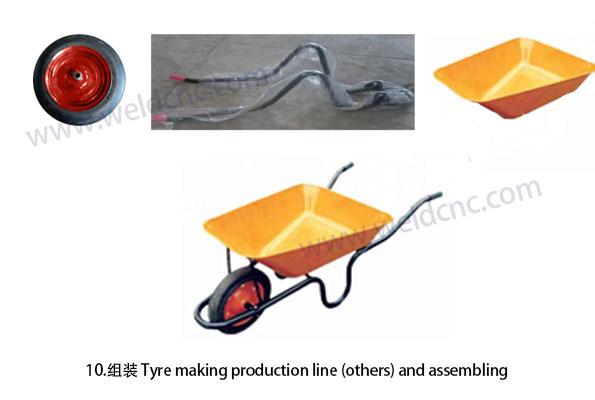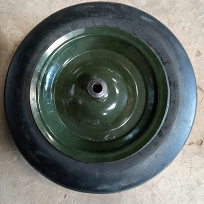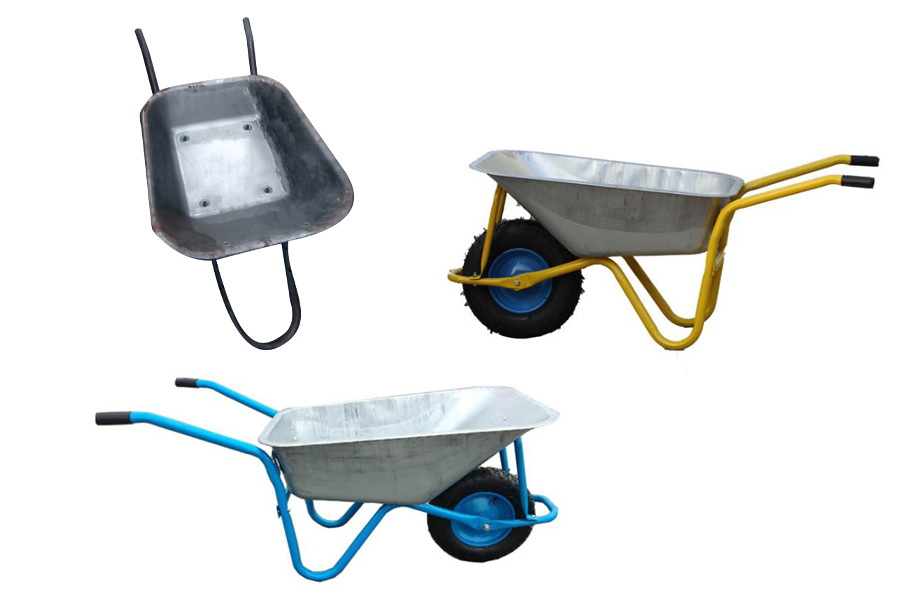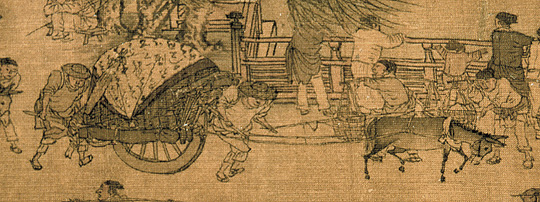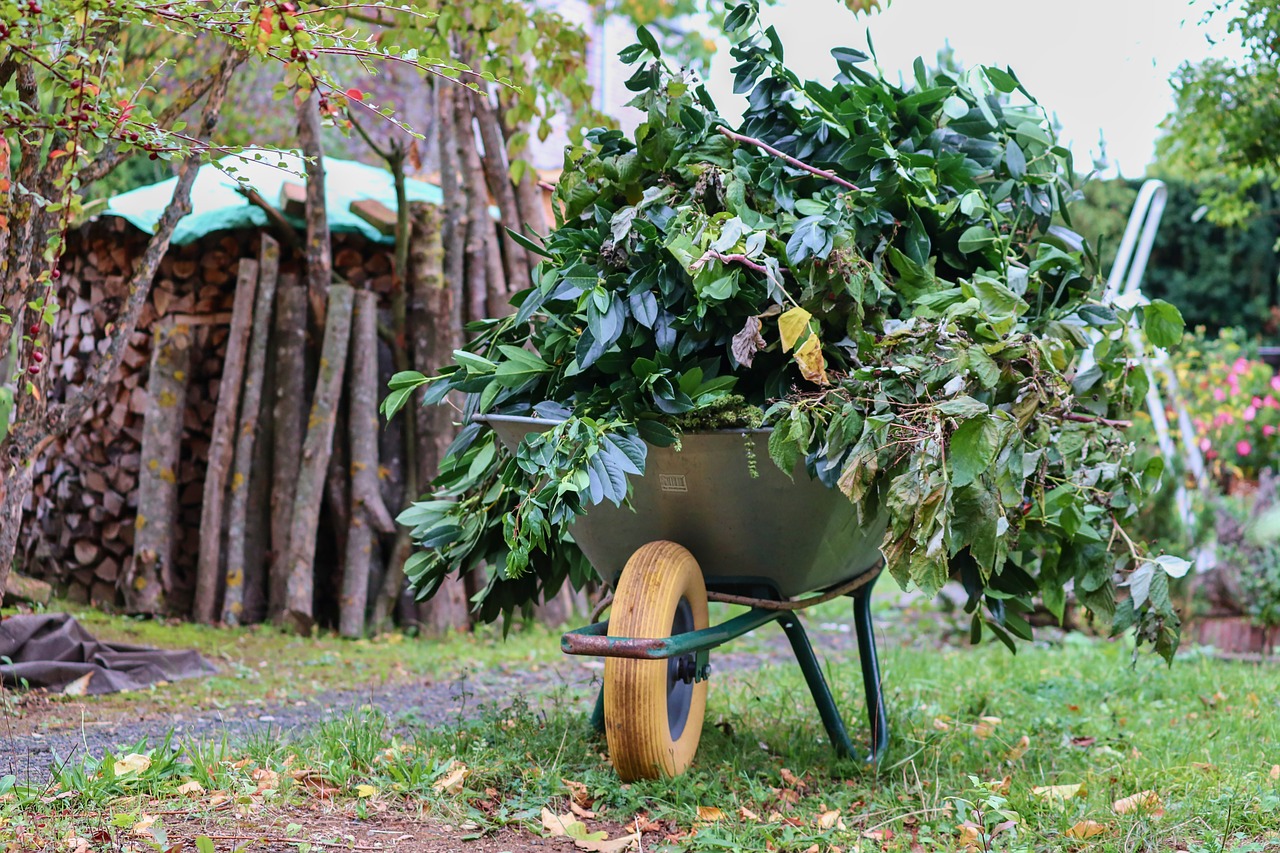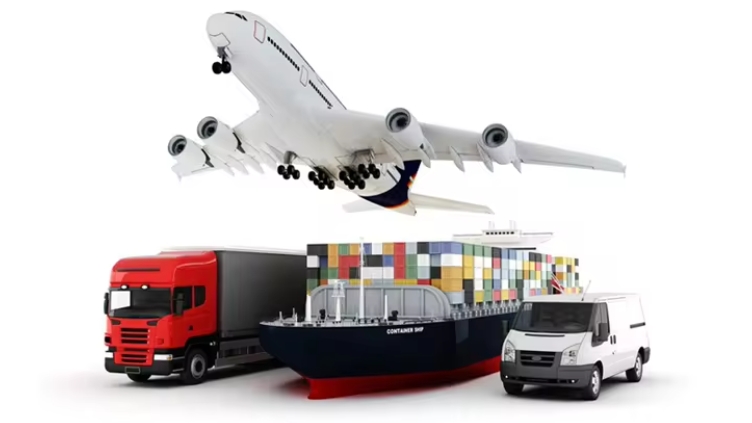News
How to Manufacture a Wheelbarrow: A Step-by-Step Guide by Jiuying
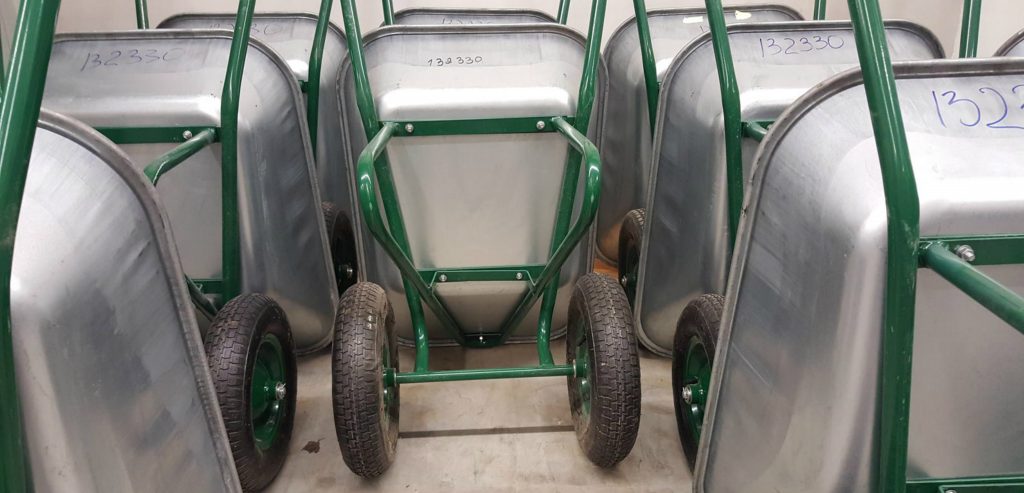
01
How to Manufacture a Wheelbarrow: A Step-by-Step Guide by Jiuying
How to Manufacture a Wheelbarrow: A Step-by-Step Guide by Jiuying
At Jiuying, we pride ourselves on producing high-quality wheelbarrows that stand the test of time. Our wheelbarrow production line is a seamless integration of precision, efficiency, and expert craftsmanship. Here's a detailed look at how we manufacture our top-tier wheelbarrows.
1. Material Selection
The foundation of a durable wheelbarrow starts with selecting the right materials. At Jiuying, we use high-grade steel for the tray and frame, ensuring maximum strength and longevity. We also opt for heavy-duty rubber for the wheel to provide excellent grip and durability.
2. Cutting and Shaping
Once the materials are selected, the steel sheets are cut into the required shapes using advanced CNC (Computer Numerical Control) machines. This ensures precision and consistency across all parts. The tray is then molded into its characteristic curved shape, and the frame parts are bent and cut to size.
3. Welding and Assembly
Next, the shaped steel components are welded together. Our skilled welders ensure that each joint is robust and seamless, contributing to the overall strength of the wheelbarrow. The tray is welded to the frame, and the handles are attached. This step requires a keen eye for detail to maintain the integrity and balance of the wheelbarrow.
4. Surface Treatment
To protect the wheelbarrow from rust and corrosion, the entire assembly undergoes a surface treatment process. This typically involves sandblasting to remove any impurities, followed by a primer coat and a final powder coating. The powder coating not only enhances the wheelbarrow's appearance but also provides a durable, weather-resistant finish.
5. Wheel Assembly
The wheel is a critical component of the wheelbarrow. At Jiuying, we ensure each wheel is perfectly balanced and securely attached to the axle. The axle is then mounted to the frame, allowing for smooth and reliable movement. We test the wheel’s rotation and alignment to ensure it meets our stringent quality standards.
6. Quality Control
Quality control is an integral part of Jiuying's wheelbarrow production line. Each wheelbarrow undergoes a thorough inspection to check for any defects or inconsistencies. We test the weight capacity, balance, and durability to ensure that every product leaving our facility meets our high standards.
7. Packaging and Distribution
Finally, the finished wheelbarrows are carefully packed to prevent any damage during transportation. We use eco-friendly packaging materials that are both sturdy and sustainable. The wheelbarrows are then distributed to retailers and customers worldwide.
Innovation and Excellence
At Jiuying, innovation drives our production process. We continually invest in research and development to improve our designs and manufacturing techniques. Our state-of-the-art wheelbarrow production line is a testament to our commitment to excellence and customer satisfaction.
Whether you’re a professional landscaper or a home gardener, Jiuying’s wheelbarrows are designed to make your tasks easier and more efficient. Trust Jiuying for quality you can depend on.
Conclusion
Manufacturing a wheelbarrow is a meticulous process that combines precision engineering with expert craftsmanship. At Jiuying, we take pride in every step of our production line, ensuring that each wheelbarrow we produce is built to last. From material selection to final assembly, our commitment to quality is unwavering. Choose Jiuying for reliable, durable, and high-performance wheelbarrows.
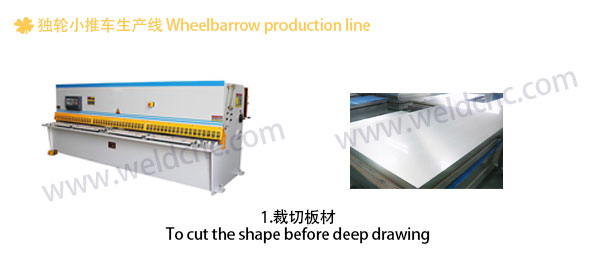
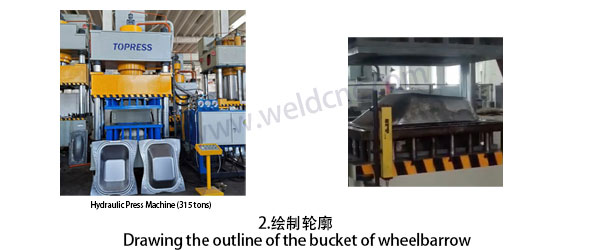
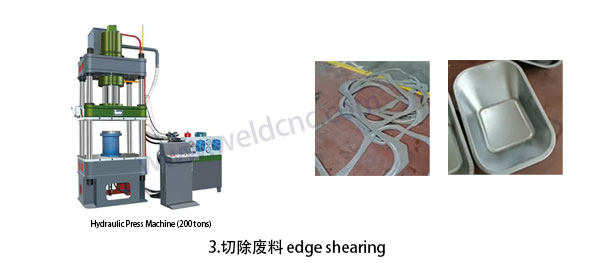
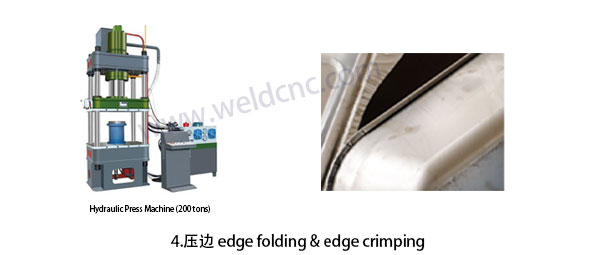
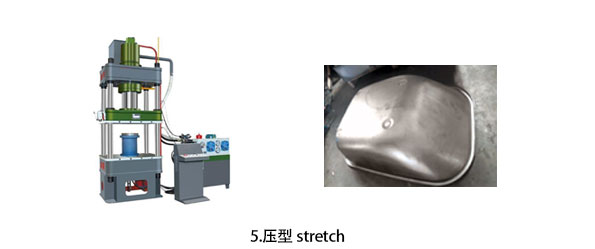
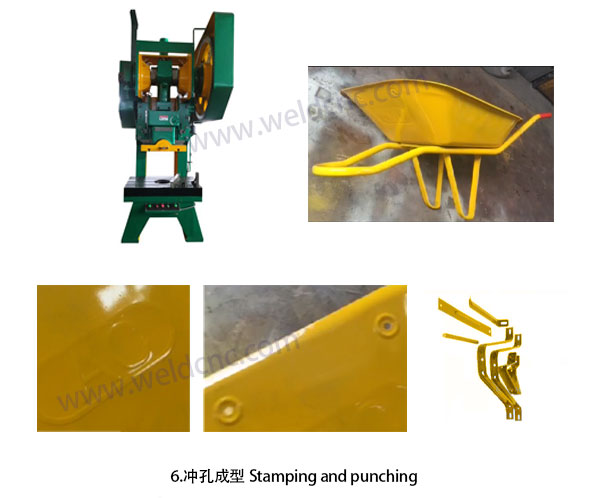
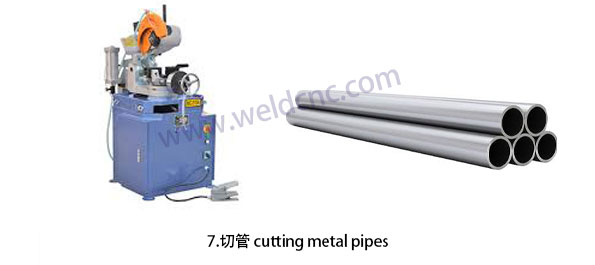
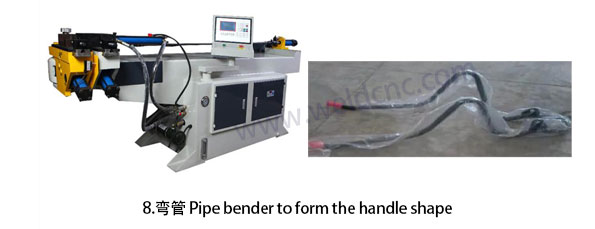
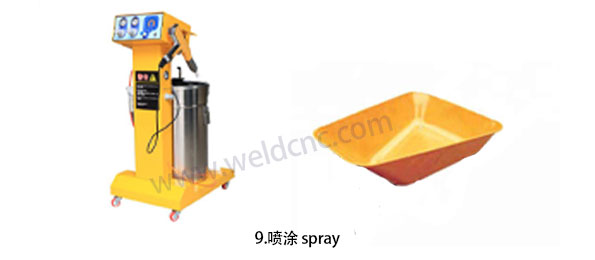
02
What is the construction of a standard wheelbarrow?
What is the construction of a standard wheelbarrow?
A standard wheelbarrow is a versatile and essential tool in construction, gardening, and various other industries. Its construction involves several key components that work together to provide functionality, durability, and ease of use. Here’s a detailed breakdown of the construction of a standard wheelbarrow:
1. Tray (Body)
- Material: Typically made of steel or heavy-duty plastic.
- Shape: The tray is shallow, open, and curved, designed to hold and transport materials like soil, gravel, and cement.
- Features: The steel trays are often coated with a rust-resistant finish, while plastic trays are chosen for their lightweight and corrosion-resistant properties.
2. Frame
- Material: Constructed from steel tubing for strength and durability.
- Design: The frame includes handles, legs, and supports for the tray. The handles are usually extended backward to provide leverage when lifting and pushing the wheelbarrow.
- Finish: Often powder-coated to resist rust and corrosion.
3. Handles
- Material: Made from steel, wood, or plastic.
- Design: Handles are typically straight or slightly angled, allowing for a comfortable grip. Some wheelbarrows feature ergonomic designs with padded grips.
4. Wheel
- Type: The most common type is a pneumatic wheel, which is inflatable and provides cushioning and smooth movement over rough terrain. Solid rubber wheels are also used for heavy-duty applications.
- Size: Usually ranges from 14 to 16 inches in diameter.
- Placement: Positioned at the front of the wheelbarrow, directly under the tray’s center of gravity, to balance the load and make it easier to maneuver.
5. Axle
- Material: Steel.
- Function: The axle connects the wheel to the frame and allows the wheel to rotate smoothly. It’s designed to withstand the weight and stresses of heavy loads.
6. Legs
- Material: Steel.
- Design: The legs provide stability when the wheelbarrow is stationary. They are usually angled to ensure the wheelbarrow stays upright and balanced when loaded.
7. Braces and Supports
- Material: Steel or heavy-duty plastic.
- Purpose: Braces and additional supports are used to reinforce the frame and tray, ensuring that the wheelbarrow can handle heavy loads without bending or breaking.
Construction Process
1. Frame Assembly
The construction begins with assembling the frame. Steel tubes are cut, shaped, and welded together to form the handles, legs, and tray supports. Precision welding ensures the frame is sturdy and can handle heavy loads.
2. Tray Formation
The tray is formed from a steel sheet or molded from plastic. For steel trays, the sheet is cut to size and then shaped using press brakes and other forming tools. The edges are often reinforced for added strength.
3. Wheel and Axle Installation
The wheel is attached to the axle, which is then mounted to the front of the frame. The axle is secured with nuts, bolts, or cotter pins, ensuring it rotates smoothly.
4. Final Assembly
The tray is mounted onto the frame, and additional braces and supports are added. Handles and grips are installed, and any final adjustments are made to ensure the wheelbarrow is balanced and easy to use.
5. Quality Control
Each wheelbarrow undergoes rigorous quality control checks to ensure it meets industry standards for durability and performance. This includes testing the stability, load capacity, and maneuverability.
Conclusion
The construction of a standard wheelbarrow involves a careful selection of materials and precise assembly processes to ensure it is robust, functional, and reliable. Each component, from the tray and frame to the wheel and axle, plays a crucial role in the overall performance of the wheelbarrow. At Jiuying, we take pride in our meticulous manufacturing process, ensuring that every wheelbarrow we produce meets the highest standards of quality and durability.
03
Where does the wheelbarrow come from?
Where does the wheelbarrow come from?
The wheelbarrow, a versatile tool widely used in construction, gardening, and agriculture, has a rich history that spans several cultures and centuries. Here’s a detailed look at the origins and evolution of the wheelbarrow:
Ancient Origins
China
The earliest evidence of the wheelbarrow comes from ancient China. Historical records and archaeological findings suggest that the Chinese were using wheelbarrows as early as the 1st century BCE.
- Invention: It is believed that the wheelbarrow was invented during the Han Dynasty (206 BCE – 220 CE).
- Design: The Chinese wheelbarrow typically had a single wheel at the front or middle, with a flat platform for carrying loads. This design allowed for easy maneuverability and balanced the load, making it easier to transport heavy items.
- Uses: The wheelbarrow was used for various purposes, including construction, agriculture, and military logistics. It played a crucial role in building infrastructure, such as the Great Wall of China.
Greece and Rome
While there is some debate, there is evidence that the concept of the wheelbarrow might have independently appeared in ancient Greece and Rome.
- Greece: References to a one-wheeled vehicle appear in the writings of the Greek historian and philosopher Heron of Alexandria in the 1st century CE.
- Rome: The Roman wheelbarrow, known as the "Puteus," is mentioned in historical texts, suggesting its use in construction and mining.
Medieval Europe
The wheelbarrow spread to Europe during the Middle Ages, where it underwent further development.
- Design Evolution: Medieval European wheelbarrows typically had a single wheel at the front and two handles at the back, a design that has remained largely unchanged.
- Usage: They were widely used in agriculture, construction, and other labor-intensive industries. The wheelbarrow was instrumental in building the grand cathedrals and castles of medieval Europe.
Modern Development
The Industrial Revolution brought significant advancements to the design and production of wheelbarrows.
- Materials: With the advent of mass production, wheelbarrows began to be made from steel and other durable materials. This increased their strength and longevity.
- Design Improvements: Innovations included the introduction of pneumatic tires, which made it easier to move heavy loads over rough terrain. Ergonomic handles and lightweight materials also improved the usability of wheelbarrows.
Conclusion
The wheelbarrow’s journey from ancient China to the modern world is a testament to its utility and enduring design. Over centuries, it has evolved from a simple, single-wheeled vehicle to a sophisticated tool essential in numerous industries. At Jiuying, we honor this rich history by combining traditional craftsmanship with modern technology to produce wheelbarrows that meet the highest standards of quality and performance. Whether for construction, gardening, or any other application, our wheelbarrows are built to last, reflecting the timeless ingenuity of this remarkable tool.
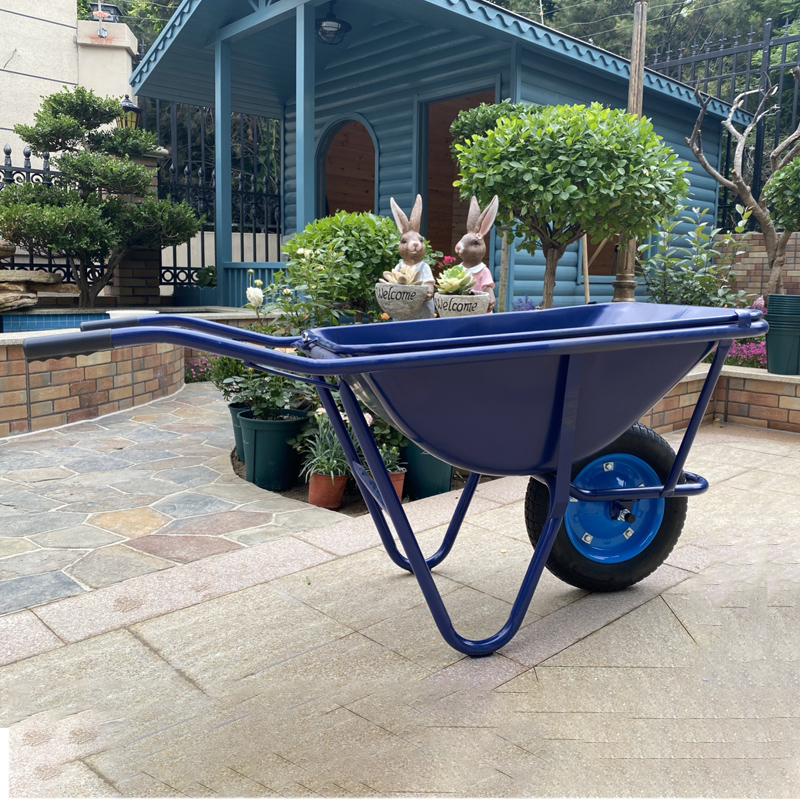
04
What is the disadvantage of a wheelbarrow?
What is the disadvantage of a wheelbarrow?
While wheelbarrows are incredibly useful tools with a long history of aiding in various tasks, they do come with certain disadvantages. Here are some of the key drawbacks:
1. Limited Load Capacity
- Weight: Wheelbarrows have a limited weight capacity, typically ranging from 200 to 600 pounds. Overloading can cause the wheelbarrow to become unstable or even break.
- Volume: The volume of material that can be transported at one time is also limited by the size of the tray.
2. Balance and Stability Issues
- Single Wheel Design: Many wheelbarrows have a single wheel at the front, which can make them difficult to balance, especially on uneven terrain or when carrying heavy, unbalanced loads.
- Tipping: They are prone to tipping over if not carefully balanced, which can cause spills and accidents.
3. Maneuverability
- Terrain Limitations: While wheelbarrows are designed to be versatile, they can be challenging to maneuver on soft, muddy, or rocky ground.
- Turning Radius: A fully loaded wheelbarrow can be difficult to turn in tight spaces, requiring significant effort and skill to navigate.
4. Physical Strain
- Manual Labor: Using a wheelbarrow involves significant physical effort, particularly when lifting, pushing, and balancing heavy loads. This can lead to fatigue and strain, especially for those not accustomed to such labor.
- Ergonomics: Poorly designed handles or incorrect use can result in back, shoulder, and wrist strain.
5. Maintenance
- Wear and Tear: Wheelbarrows are subject to wear and tear, especially the wheel and axle. Pneumatic tires can go flat, and metal trays can rust if not properly maintained.
- Repairs: Regular maintenance is needed to keep a wheelbarrow in good working condition, which includes checking for loose bolts, repairing punctured tires, and treating rust spots.
6. Space Requirements
- Storage: Wheelbarrows require storage space when not in use. For those with limited storage options, finding a place to keep a wheelbarrow can be inconvenient.
7. Cost
- Initial Investment: While generally affordable, high-quality or specialized wheelbarrows can be relatively expensive.
- Replacement Parts: The cost of replacement parts, such as wheels or handles, can add up over time.
8. Specificity
- Task Limitation: Wheelbarrows are designed for specific tasks like transporting materials. They are not suitable for all types of material handling, especially where mechanized or larger-scale solutions are required.
Conclusion
While wheelbarrows are indispensable tools in many scenarios, it is important to be aware of their limitations. These disadvantages can be mitigated by selecting the right type of wheelbarrow for the task, maintaining it properly, and using it correctly to avoid physical strain and accidents. At Jiuying, we strive to design and manufacture wheelbarrows that address these common issues, offering products that are durable, well-balanced, and ergonomic to meet the diverse needs of our customers.
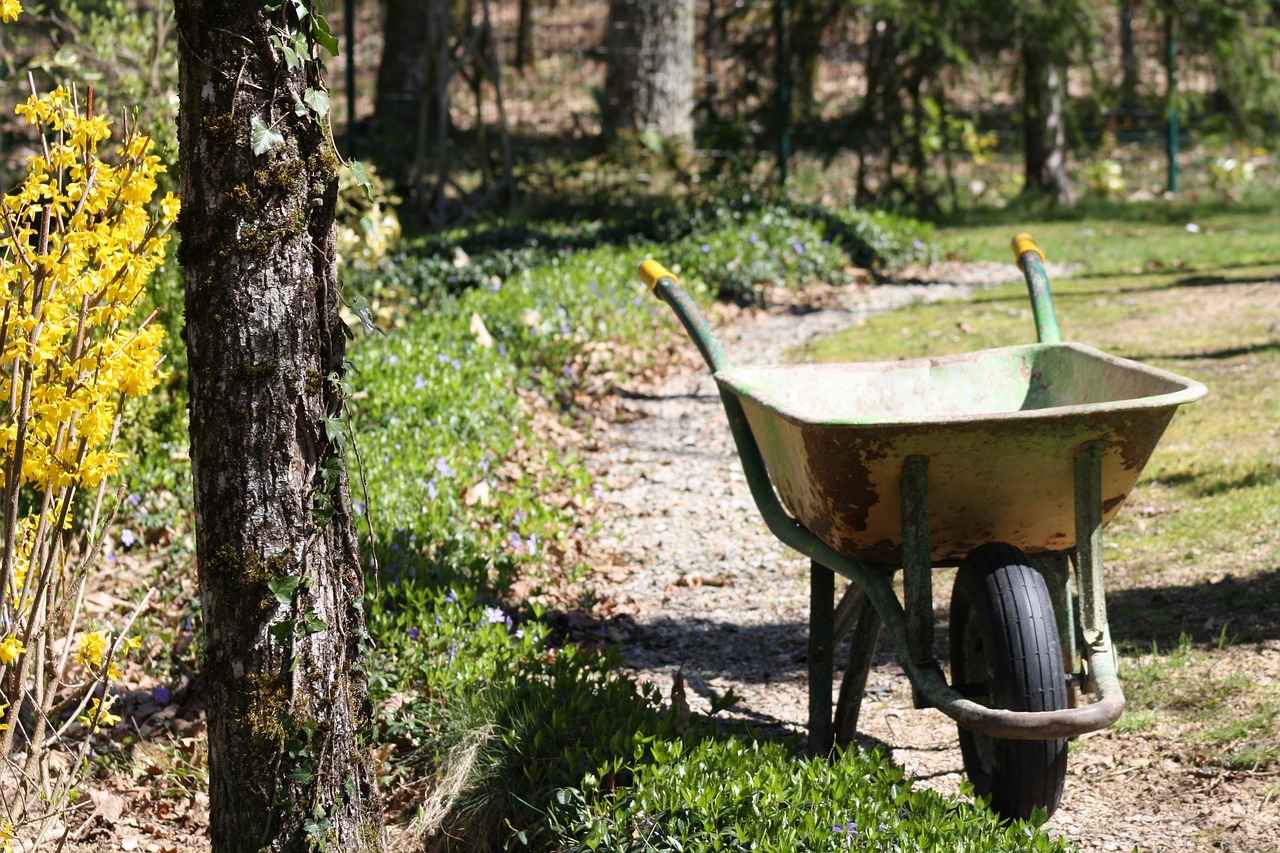
05
Modern Applications and Future Development Trends of Wheelbarrows
Modern Applications and Future Development Trends of Wheelbarrows
Modern Applications
Construction
- Material Transport: Wheelbarrows are essential for moving materials like sand, gravel, cement, and bricks on construction sites.
- Debris Removal: They are also used to remove debris and waste materials, making construction sites safer and more organized.
Gardening and Landscaping
- Soil and Mulch Transport: Gardeners and landscapers use wheelbarrows to move soil, mulch, plants, and other materials.
- Waste Collection: They help in collecting and transporting garden waste such as leaves, branches, and weeds.
Agriculture
- Harvesting: Farmers use wheelbarrows to collect and transport harvested crops from fields.
- Feeding and Maintenance: They are used for carrying feed, fertilizers, and tools around farms.
Home Improvement
- DIY Projects: Homeowners use wheelbarrows for various DIY projects, including moving materials for building patios, garden beds, and more.
Industry and Warehousing
- Material Handling: In industrial settings, wheelbarrows assist in moving raw materials, components, and waste products within warehouses and factories.
Future Development Trends
Electric and Motorized Wheelbarrows
- Battery-Powered Models: Electric wheelbarrows with battery-powered motors are becoming increasingly popular, reducing the physical effort required to move heavy loads.
- Solar-Powered Options: Some models are exploring solar power to provide sustainable energy solutions for motorized wheelbarrows.
Enhanced Ergonomics
- Adjustable Handles: Future designs may include adjustable handles to accommodate users of different heights, reducing strain and improving comfort.
- Padded Grips: Ergonomic grips can reduce hand fatigue and improve control.
Improved Materials
- Lightweight and Durable Materials: Advances in materials science are leading to the development of wheelbarrows made from lightweight yet durable materials like high-density polyethylene (HDPE) and advanced composites.
- Rust-Resistant Coatings: Improved coatings can enhance the longevity and durability of metal components.
Smart Wheelbarrows
- GPS Tracking: Integrating GPS technology can help track the location of wheelbarrows on large construction sites or farms.
- Load Sensors: Smart sensors can monitor the weight of the load and provide feedback to prevent overloading and enhance safety.
Modular Designs
- Interchangeable Parts: Modular wheelbarrow designs with interchangeable parts such as different types of wheels, trays, and handles can provide versatility and customization for various tasks.
- Attachment Systems: Systems that allow for easy attachment of accessories like tool holders, storage bins, or even small trailers can increase functionality.
Sustainability
- Eco-Friendly Manufacturing: Using recycled materials and sustainable manufacturing practices can reduce the environmental impact of wheelbarrow production.
- Recyclable Components: Designing wheelbarrows with fully recyclable components can contribute to a circular economy.
Safety Features
- Stability Enhancements: Future designs may focus on improving stability with wider wheelbases and better weight distribution to prevent tipping.
- Brake Systems: Incorporating brake systems can provide better control when handling heavy loads on slopes or uneven terrain.
Conclusion
The wheelbarrow, a timeless tool, continues to evolve with modern applications and future development trends. At Jiuying, we are committed to staying at the forefront of these advancements, integrating innovative features and sustainable practices into our wheelbarrow production line. By doing so, we aim to enhance the functionality, durability, and user experience of our wheelbarrows, meeting the ever-changing needs of our customers in construction, gardening, agriculture, and beyond.
06
Why Choose Jiuying's Wheelbarrow Production Line?
Why Choose Jiuying's Wheelbarrow Production Line?
Selecting the right wheelbarrow production line is crucial for ensuring product quality, reliability, and efficiency. At Jiuying, we take pride in our state-of-the-art production line, which offers numerous advantages over the competition. Here are compelling reasons to choose Jiuying's wheelbarrow production line:
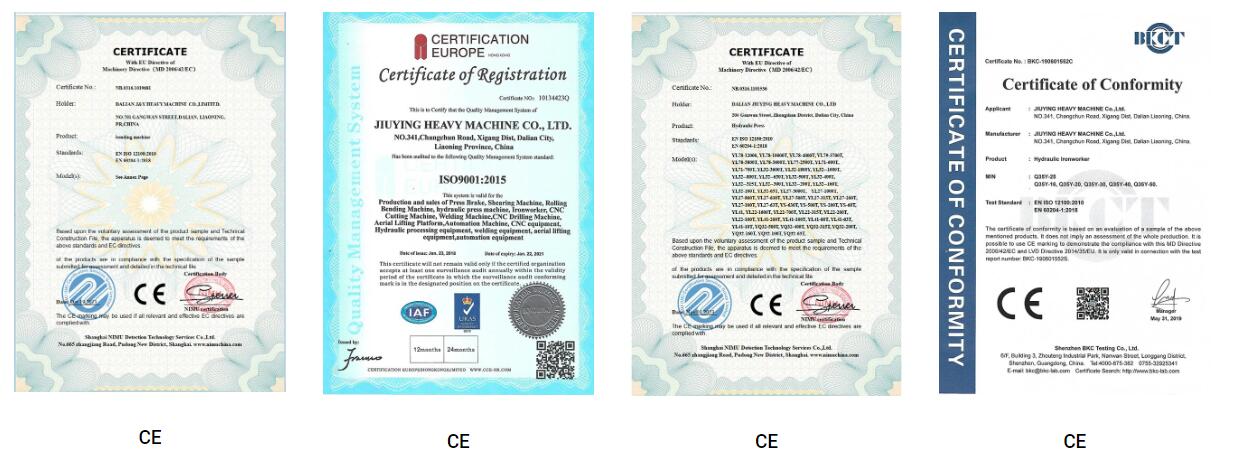
1. Superior Quality Control
- Rigorous Testing: Each wheelbarrow undergoes comprehensive testing to ensure it meets our high standards for strength, durability, and performance.
- Consistent Quality: Our advanced manufacturing processes and skilled workforce ensure that every wheelbarrow produced maintains consistent quality.
2. Advanced Manufacturing Technology
- Cutting-Edge Equipment: We use the latest CNC machines, robotic welders, and automated assembly lines to enhance precision and efficiency.
- Innovative Techniques: Our production line incorporates innovative techniques such as laser cutting and powder coating, which improve the finish and longevity of our products.
3. Expert Craftsmanship
- Experienced Workforce: Our team of skilled workers and engineers brings years of experience and expertise to the production process.
- Attention to Detail: From welding to final assembly, every step is performed with meticulous attention to detail to ensure the highest quality.
4. Customizable Options
- Tailored Solutions: We offer customizable options to meet specific customer needs, including different sizes, materials, and design features.
- Versatility: Our production line can handle a wide range of wheelbarrow types, from heavy-duty construction models to lightweight gardening variants.
5. Sustainable Practices
- Eco-Friendly Materials: We prioritize the use of eco-friendly and recyclable materials in our production process.
- Sustainable Manufacturing: Our commitment to sustainability extends to our manufacturing practices, which minimize waste and energy consumption.
6. Competitive Pricing
- Cost-Effective Production: Our efficient production methods allow us to offer high-quality wheelbarrows at competitive prices.
- Value for Money: We provide excellent value for money by combining superior quality with affordability.
7. Robust Supply Chain
- Reliable Sourcing: We have established strong relationships with reliable suppliers to ensure a steady supply of high-quality raw materials.
- Timely Delivery: Our efficient production and logistics systems ensure that orders are fulfilled and delivered on time.
8. Innovation and Development
- Continuous Improvement: We are committed to continuous improvement and regularly invest in research and development to enhance our products and processes.
- Future-Ready: By staying ahead of industry trends, we ensure that our wheelbarrows incorporate the latest advancements and meet evolving customer needs.
9. Excellent Customer Support
- Responsive Service: Our dedicated customer support team is always ready to assist with inquiries, orders, and after-sales service.
- Customer Satisfaction: We prioritize customer satisfaction and strive to exceed expectations with every product and service we provide.
10. Global Reach
- International Standards: Our wheelbarrows are manufactured to meet international standards, making them suitable for markets worldwide.
- Global Distribution: We have a robust distribution network that ensures our products are available to customers around the globe.
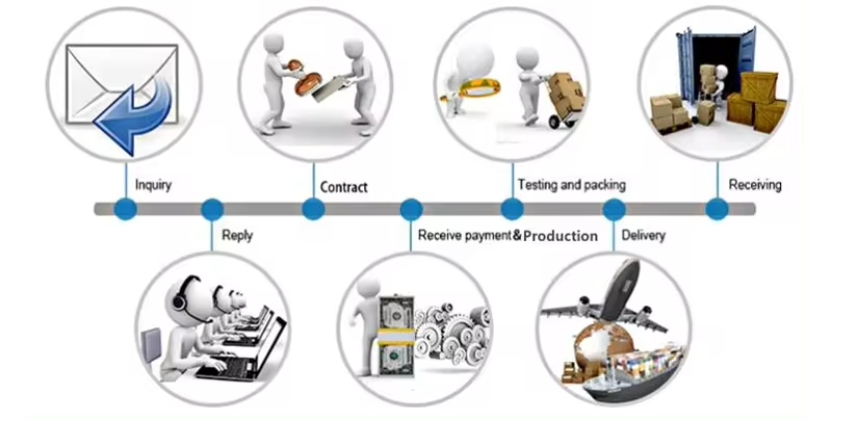
Conclusion
Choosing Jiuying's wheelbarrow production line means opting for superior quality, advanced technology, and unparalleled customer service. Our commitment to excellence and innovation ensures that every wheelbarrow we produce meets the highest standards of durability, functionality, and performance. Trust Jiuying for all your wheelbarrow needs and experience the difference of a truly exceptional production line.
07
Contact Us
Contact Us

Tel: 0086-13394110095
Fax: +86-411-39569826
Mobile: 0086-13394110095
Email: liu@weldcnc.com
CATEGORIES
News
Contact Us
Tel:0086-13394110095
Fax:0086-411-39015062
Phone:0086-13394110095
Email:liu@weldcnc.com
Add:20# Ganwan Street, Zhongshan District, Dalian City, China
